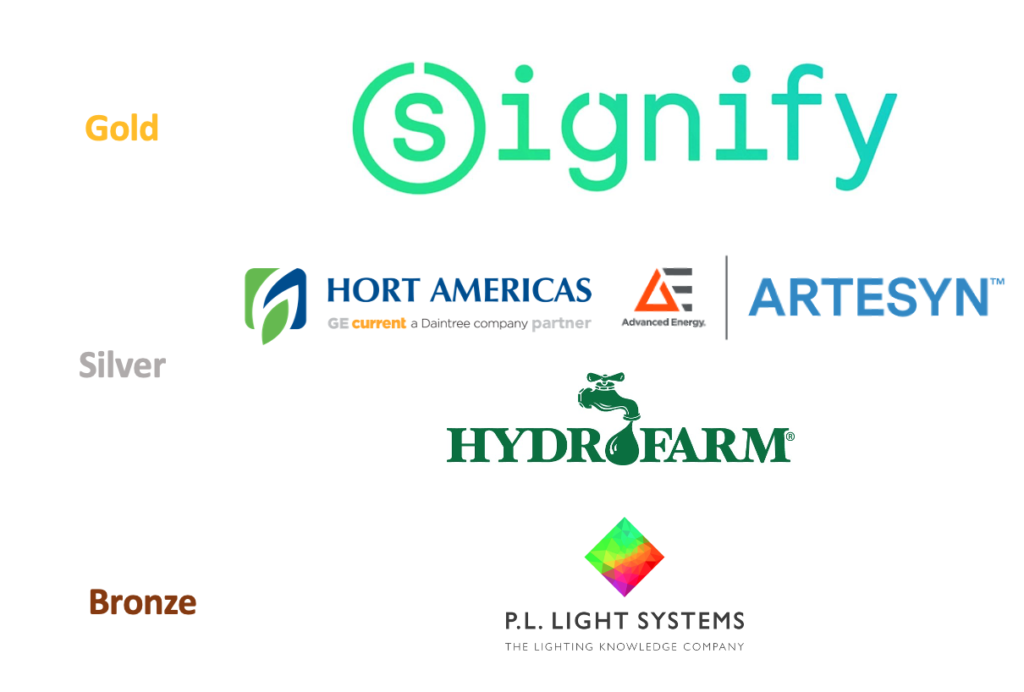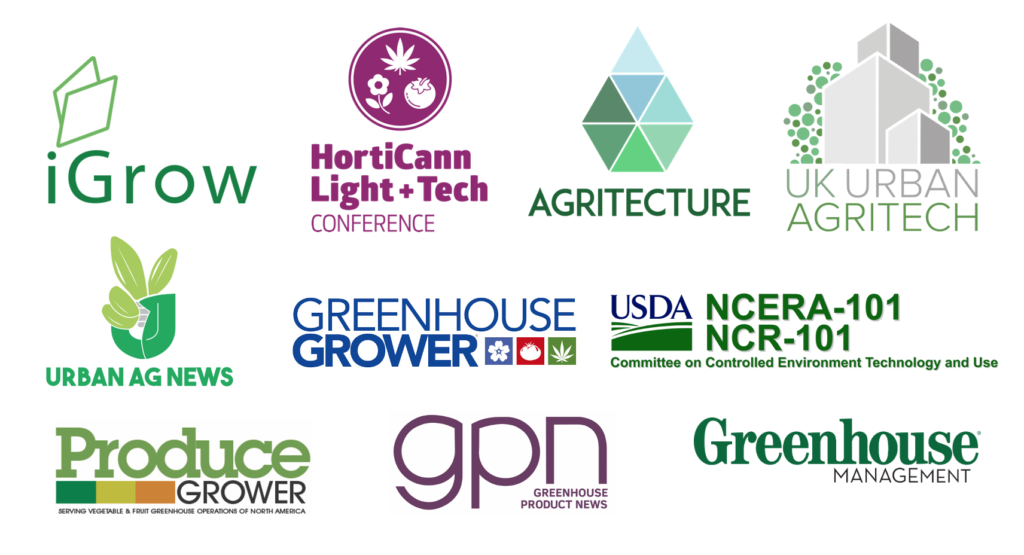The first Plant Lighting Short Course will cover all aspects related to the selection, implementation and benefits of plant lighting systems.
Do you have questions about the optimum light levels for growing controlled environment crops? What about which grow lights would work best for your crops and production facility? More importantly, do you want to know how much is it going to cost you to operate those grow lights?
These questions and many more will be answered during the first Plant Lighting Short Course. This six-week virtual event is scheduled for Oct. 14 to Nov. 18, 2021.
The Short Course was developed through a partnership of the Greenhouse Lighting and Systems Engineering (GLASE) consortium, OptimIA and LAMP.

The purpose of the Short Course is to provide participants with an opportunity to learn about all aspects related to the selection, implementation and benefits of plant lighting systems. The Short Course has been organized into six educational modules that will be presented and moderated by industry experts and leading university researchers.
Module 1: Introduction to crop lighting
Module 2: Deciding to use crop lighting
Module 3: Crop production with supplemental lighting
Module 4: Crop lighting systems
Module 5: Economics of crop lighting
Module 6: Future of crop lighting
In addition to the educational topics, participants will have the opportunity to learn about and use interactive tools that can assist in helping to define specific lighting requirements, including:
- Photosynthetically active radiation (PAR) light sensors
- Daily light integral map
- Light uniformity assessment
- Virtual Grower (USDA) decision support tool
- Lighting cost calculators
- Advanced lighting controls (LASSI)
By the end of the Short Course, participants will have the information and tools necessary to make decisions about the best options to meet their lighting needs. The Short Course covers all of the topics growers need to think about when considering greenhouse lighting.
At the end of each module there will be a 25-minute Q&A period. This will enable multiple lighting researchers and industry experts to weigh-in on a particular question. In addition, participants have the opportunity to earn up to 12 certified crop advisor continuing education unit (CEU) credits.

How much light do CEA crops need?
During Module 1: Introduction to Crop Lighting on Oct. 14, Neil Mattson, associate horticulture professor at Cornell University and GLASE principal investigator, will be focusing on crop lighting needs. He will be talking about the most common controlled environment crops, including leafy greens, tomatoes, cucumbers, strawberries and hemp.
“I will be discussing at what quantities of light CEA crops perform optimally and produce high quality and yield,” Mattson said. “Some crops have specific photoperiod requirements. For instance, hemp requires a short day length to flower which necessitates black out (i.e. light deprivation curtains) for year-round flowering. Tomatoes need a four- to six-hour dark period at night. Lettuce, on the other hand, can be lit for 24 hours. The number of hours in a day that light can be supplied impacts size of a lighting installation.
“In addition to knowing the quantity of light for a crop, it is also important to know how that light is delivered over a day to ensure the plants receive the light they need. I will also be sharing the results of some of our GLASE research studies on how the quantity of light affects the productivity of strawberries, lettuce and tomatoes.”

Purposes of and differences in lighting
Erik Runkle, horticulture professor at Michigan State University and director of the OptimIA project, will be doing three presentations during the Short Course. The purpose of the project’s research and extension activities is to assist indoor agriculture growers to be more profitable and sustainable.
“Five of the OptimIA researchers are using lighting in some way in their research,” Runkle said. “This doesn’t mean that their research is focused solely on light, but light is involved in some way in their research. For example, they may be looking at light in combination with other parameters such as the interaction between light and temperature or light ways to mitigate tip burn in lettuce.”
Runkle’s first presentation during Module 1 on Oct. 14 will discuss how the light environment is manipulated in the production of plants.
“This will be a high level talk about what growers can do to moderate light intensity, such as the glazing material and the effect that can have on light transmission,” he said. “This could involve the use of shade screens to modulate light. Growers also need to be aware of things that cause shading such as overhead obstructions like hanging baskets. In some cases, most of the actions taken to decrease light are done for a reason. However, growers may be decreasing light without even thinking about it and what the impact could be.”
Runkle will also be talking about the different types of lighting that can be used in greenhouses. He’ll focus primarily on low intensity lighting to regulate the photoperiod and high intensity lighting or supplemental lighting to increase growth.
“There is still some confusion on the part of growers about the difference in these two types of lighting,” he said. “Growers may think they can deliver a low light intensity and see an increase in plant growth and that typically doesn’t happen. I want to be sure people are clear about the purposes of lighting and what intensities are needed to achieve their objectives.”
Runkle’s second presentation will occur during Module 3: Crop Production with Supplemental Lighting on Oct. 28.
“During this module we’re going to cover the basics of photoperiodic lighting, why it might be used and how to develop and deliver an effective lighting system,” he said. “I’m going to be discussing photoperiodic or low intensity lighting and how to create long days when the days are naturally short. This will focus on different lamps, including conventional ones such as incandescent bulbs as well as the many LED options that exist today.
“I’ll also discuss cyclic lighting, which is intermittent lighting during the night, operating lights on off-and-on cycles. I’ll also talk about the spectrum of photoperiodic lighting because that could influence the efficacy of the light as well as the intensity.”
During his third presentation in Module 4: Crop Lighting Systems on Nov. 4, Runkle will compare high pressure sodium vs. LED grow lights.
“I’ll focus on high intensity lighting applications discussing the pros and cons of the two technologies,” he said. “HPS is the conventional fixture and proven technology with the lower cost. But it is also has a fixed spectrum and is less efficient than LEDs.
“I’ll talk about when a situation might lend itself to HPS and where LEDs might be more cost effective. It’s not a case of one technology being better than the other. It’s more about which is the more economical fixture for specific applications.”

What is the cost of artificial lighting?
Marc van Iersel, horticulture professor at the University of Georgia and member of the LAMP research and extension project, will be discussing the Lighting Cost Calculator that was developed by LAMP members. van Iersel will be speaking during Module 5: Economics of Crop Lighting on Nov. 14.
“Lighting approaches to maximize profits (LAMP) is a research and outreach project funded by USDA with the goal of maximizing profits by improving lighting systems used in controlled environment agriculture,” van Iersel said. “There hasn’t been a lot of research that focuses specifically on the economics, the profitability of lighting. LAMP members want to make a real impact on the industry and profitability is more important than anything else.”
The Lighting Cost Calculator was developed to help growers estimate what is the cost of providing supplemental light in greenhouses.
“The reason behind developing the calculator was if a greenhouse grower is considering installing or replacing the current lighting system, it is difficult to figure out what is the best economical option for the facility,” van Iersel said. “It’s easy to figure out the capital expenses because different light manufacturers can provide quotes on the fixtures along with any rebates that may apply. However, it is difficult to figure out what the operating expenses of those lights are going to be.
“The calculator tool helps to estimate the operating expenses for a given production area. The calculator allows growers to look at different scenarios before they decide what kind of lights they want to install. Hopefully the calculator will help them make better informed choices. One of the unique features of the calculator is growers can enter their zip code and the calculator retrieves typical light data for a specific location and can customize the operating expenses for that location.”
David Kuack is a freelance technical writer in Fort Worth, Texas; dkuack@gmail.com.
Short Course Sponsors

Short Course Media Partners



